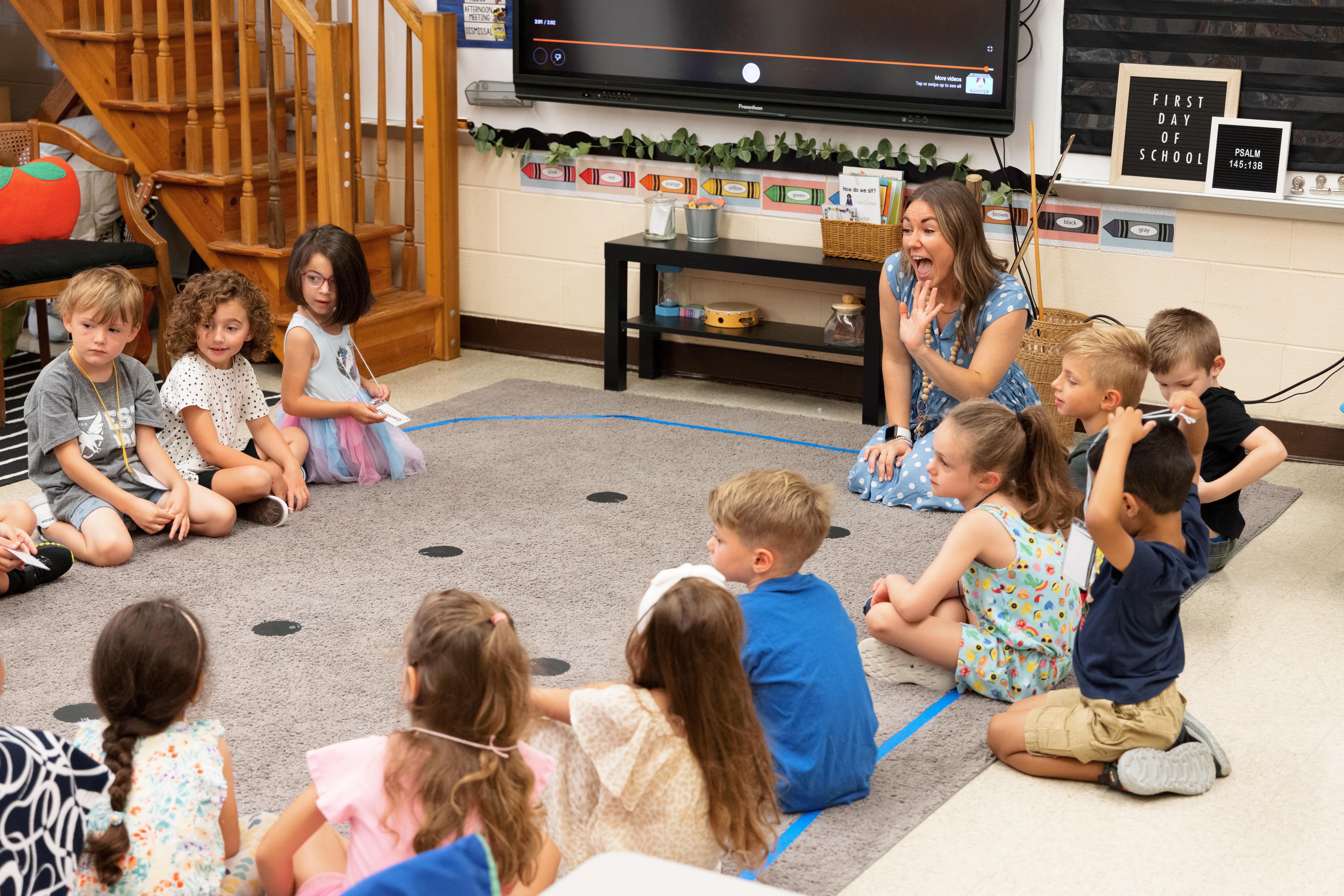Hello, CSI family! My name is Jessica Truran, and I have the privilege of working as a kindergarten teacher at Eastern Christian Elementary School. While I am currently in my sixth year of teaching, I noticed early on in my career that my students’ social and emotional health was impacting their performance in the classroom. One day, as a brand new teacher, I was leading my class out the door for PE when one of my students suddenly sat down, laid his head on the desk, and refused to budge. I had no idea what happened—just a few moments earlier, he had been joking around with his classmates, and then he shut down. As our relationship grew, I learned that this child was experiencing trouble at home, and when those emotions welled up inside, he just didn’t know how else to cope.
In order to love my students well, I knew that I had to learn more. Working at EC allowed me to pursue a Master’s of Education in Trauma and Resilience in Educational Settings, and through the EC Career Pathway program, I have been able to broaden my knowledge through various trainings and certification programs. I have had the privilege of sharing this expertise with colleagues through professional development, book clubs, and mentoring relationships.
When you think of trauma, what comes to mind? Maybe a car accident, natural disaster, or some sort of abuse–these adverse experiences can result in negative consequences, but they are not the end. Quite simply, trauma is the inability to cope with “a continual high level of stress” (Sporleder & Forbes, 2016, p. 1). This means that trauma can also stem from everyday circumstances such as financial trouble, illness, or the loss of a loved one. We experience trauma when we feel stress to a point that is beyond our ability to cope. As children develop, trauma can literally change the wiring of their brains, activating the body’s fight or flight mode again and again, resulting in neural pathways primed for impulsivity or avoidance. A trauma-affected brain can struggle with memory and focus, to the degree that for some children, “it is physiologically impossible for them to function appropriately and constructively in the classroom” (Sporleder & Forbes, 2016, p. 27).
In a way, our society has experienced a collective trauma through the events of the pandemic, one that has a direct impact on our children. They see the stress that we feel, and they absorb our coping strategies, whether healthy or not. In my role as a Christian educator, I have been empowered by my knowledge of trauma and the grace of God’s spirit to help my students identify their feelings and cope with stressful situations. So what does a trauma-informed response look like? Sometimes, this looks like taking a deep breath while we send a silent prayer to God. We learn to smell a flower and blow out a candle, or sniff like a bunny and buzz like a bee, all while deactivating our fight or flight mode and reminding ourselves to be still and know that He is God. Other times, students learn skills to assert themselves. Rather than reacting quickly, my students practice identifying their feelings and explaining what they need. It is not uncommon to hear a five-year-old saying, “I don’t like it when you take the block out of my hand. Next time, please ask me for a turn.” When students are empowered to use their big voices, they feel prepared to tackle big emotions and solve problems together.
Trauma-informed schools understand that children are developing in more ways than one, and they are influenced by a number of factors that we may not always see. Trauma-informed teachers seek not to develop students who simply conform to desired behaviors, but who understand how their brain works and how to cope with stress when it arises. Eastern Christian School aims to Engage the Mind, Nurture the Spirit, and Transform the World. We believe that students’ physical, social, and emotional needs are just as great as their academic success.
The impact of trauma on growing children is not something that we can ignore. We cannot escape the consequences of a fallen world, but we can learn to cope in a manner that is honoring to God. When we teach children strategies to cope with stress in a healthy manner, we are empowering them to understand their own brains, treat others with love, and honor God with their actions. Children who are able to cope with stress will grow to become adults who model healthy emotional and spiritual lives for others. When parents and teachers prioritize these skills, they raise up a generation that is stronger than trauma—one that is free to have faith, vision, and influence for God’s glory.
Action Steps for Trauma-informed Teaching
Did this article resonate with you? If you are looking to learn more about trauma-informed teaching, try these next steps!
- Educate yourself about trauma and its effects. The Body Keeps the Score by Bessel van der Kolk, The Deepest Well by Nadine Burke-Harris, and The Trauma-Informed School by Jim Sporleder and Heather T. Forbes are three great places to start!
- Seek out trauma-informed teaching resources. Social-emotional learning and trauma-informed teaching often go hand-in-hand. The Conscious Discipline Institute has many free resources available for homes and classrooms seeking to teach children about their brain states, emotional regulation, and connection.
- Take care of yourself. According to Dr. Natalie Turner, “Stressed brains can’t learn, and stressed brains can’t teach.” You cannot model emotional regulation and executive thinking for your students if you are feeling overwhelmed. Take time to go for a walk, read that book, or do whatever fills your cup so that you can be fully present when your students need your support.
Jessica Truran is a kindergarten teacher at Eastern Christian Elementary School in Midland Park, NJ. She holds an M.Ed. in Trauma and Resilience in Educational Settings and is currently in her sixth year of teaching. When she is not at school, she enjoys walking her dog at the local nature preserve, reading, and testing new recipes. If you have additional questions or comments, you can email Jessica.
We thank Jessica for sharing an article that will resonate with many teachers across the CSI community. Remember, CSI is accepting articles for the Teacher to Teacher blog. They can be submitted to Jennifer Thompson.

Rather than reacting quickly, my students practice identifying their feelings and explaining what they need.

I have had the privilege of sharing this expertise with colleagues through professional development. Social-emotional learning and trauma-informed teaching often go hand-in-hand.

